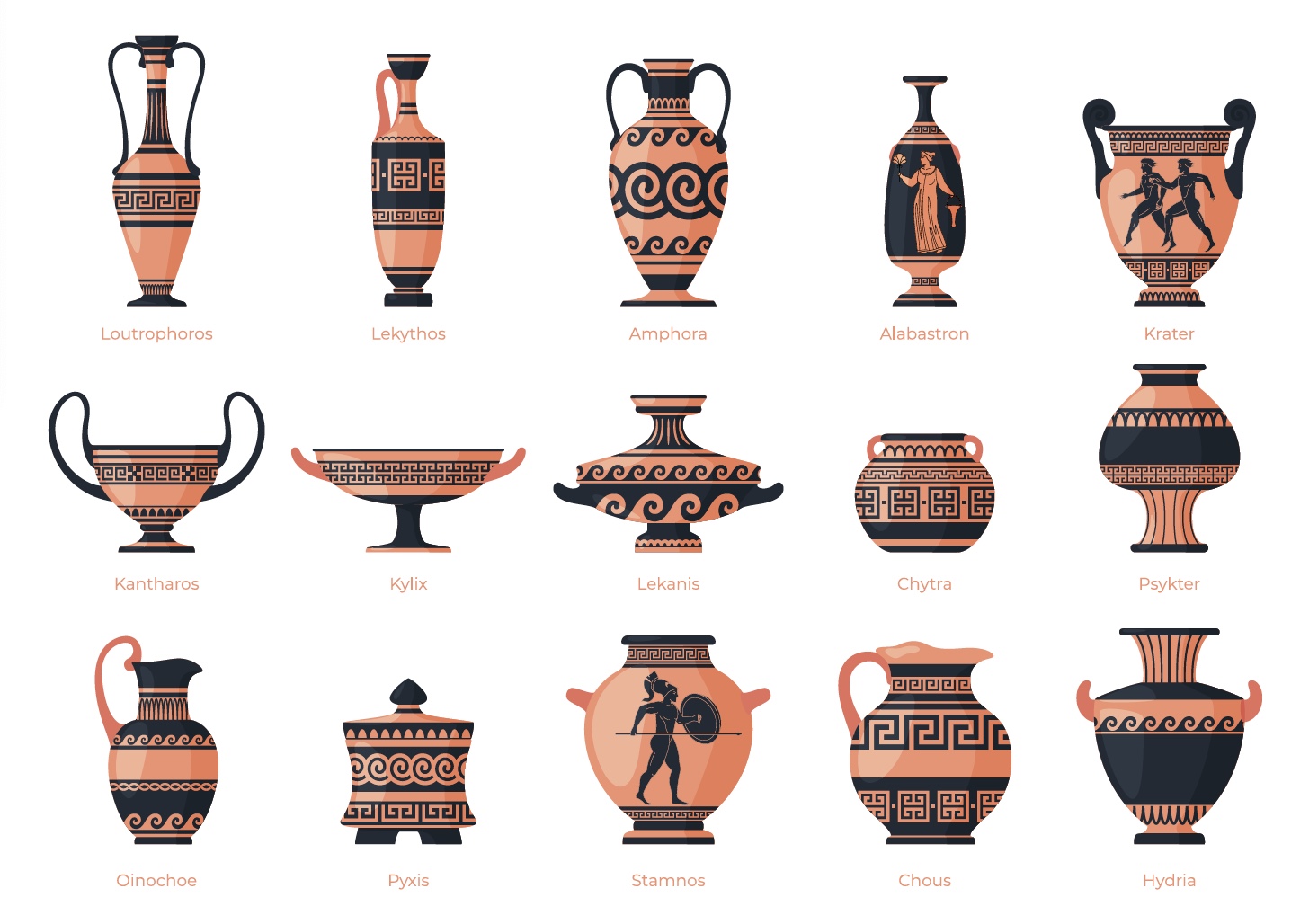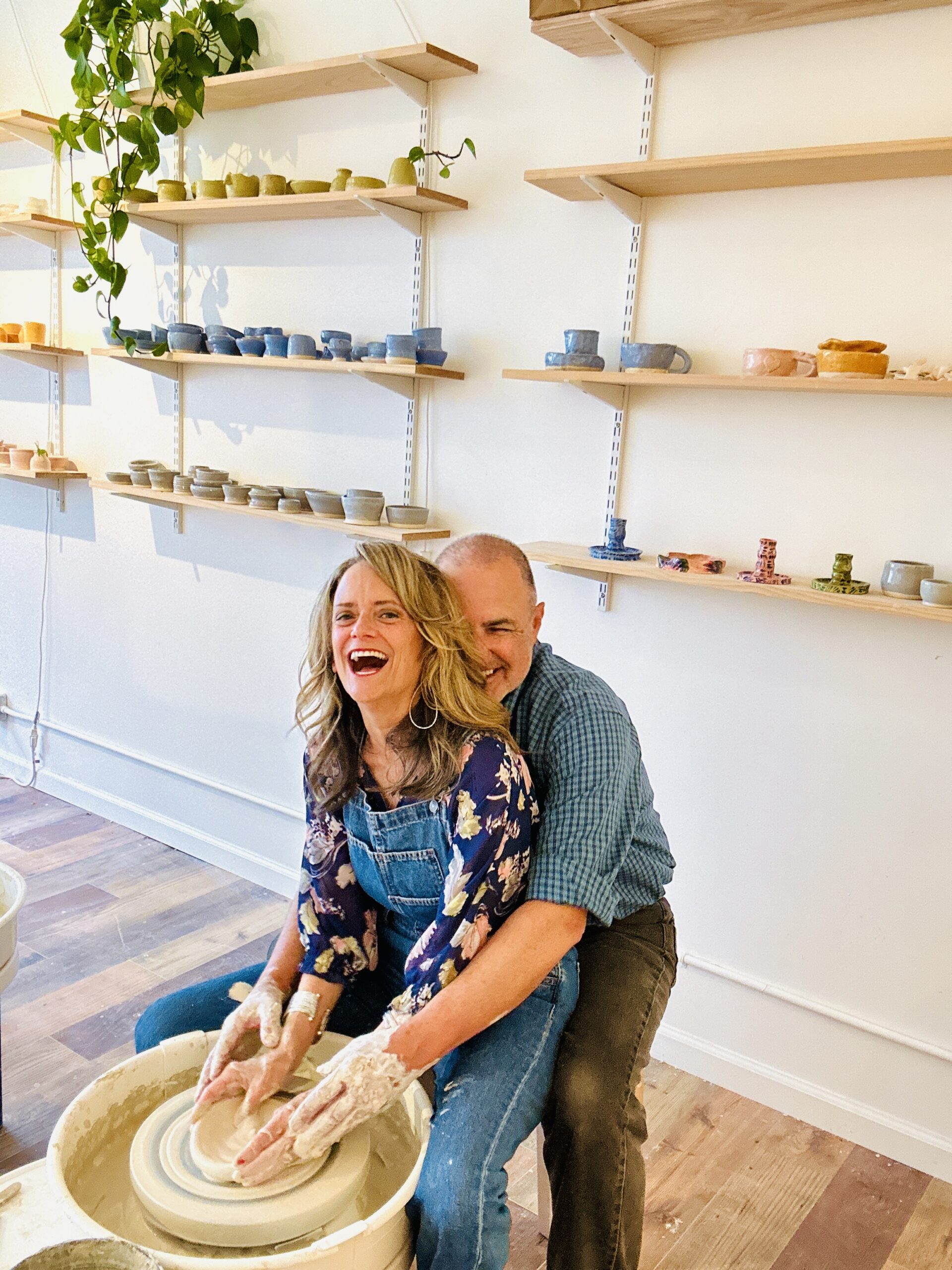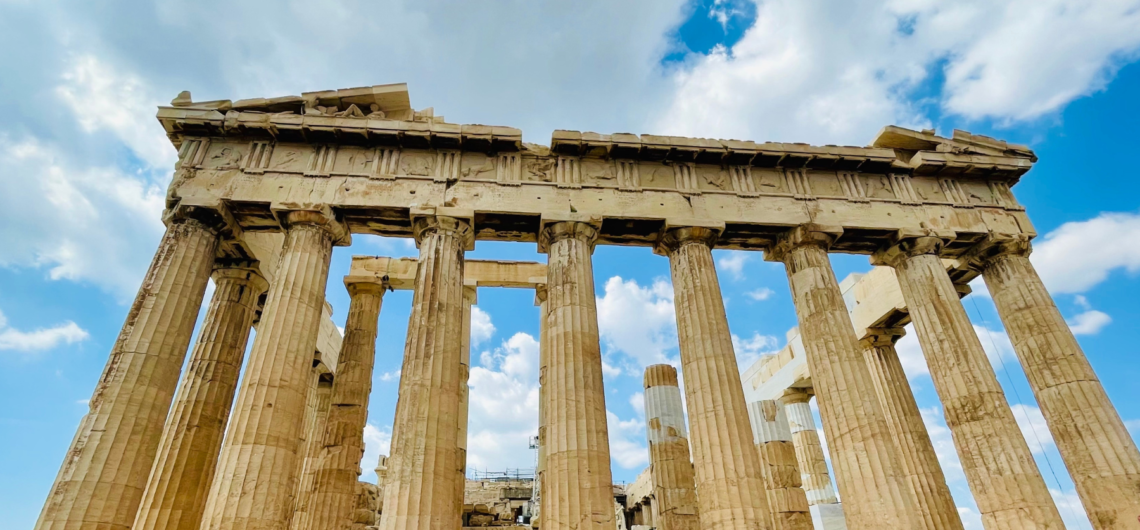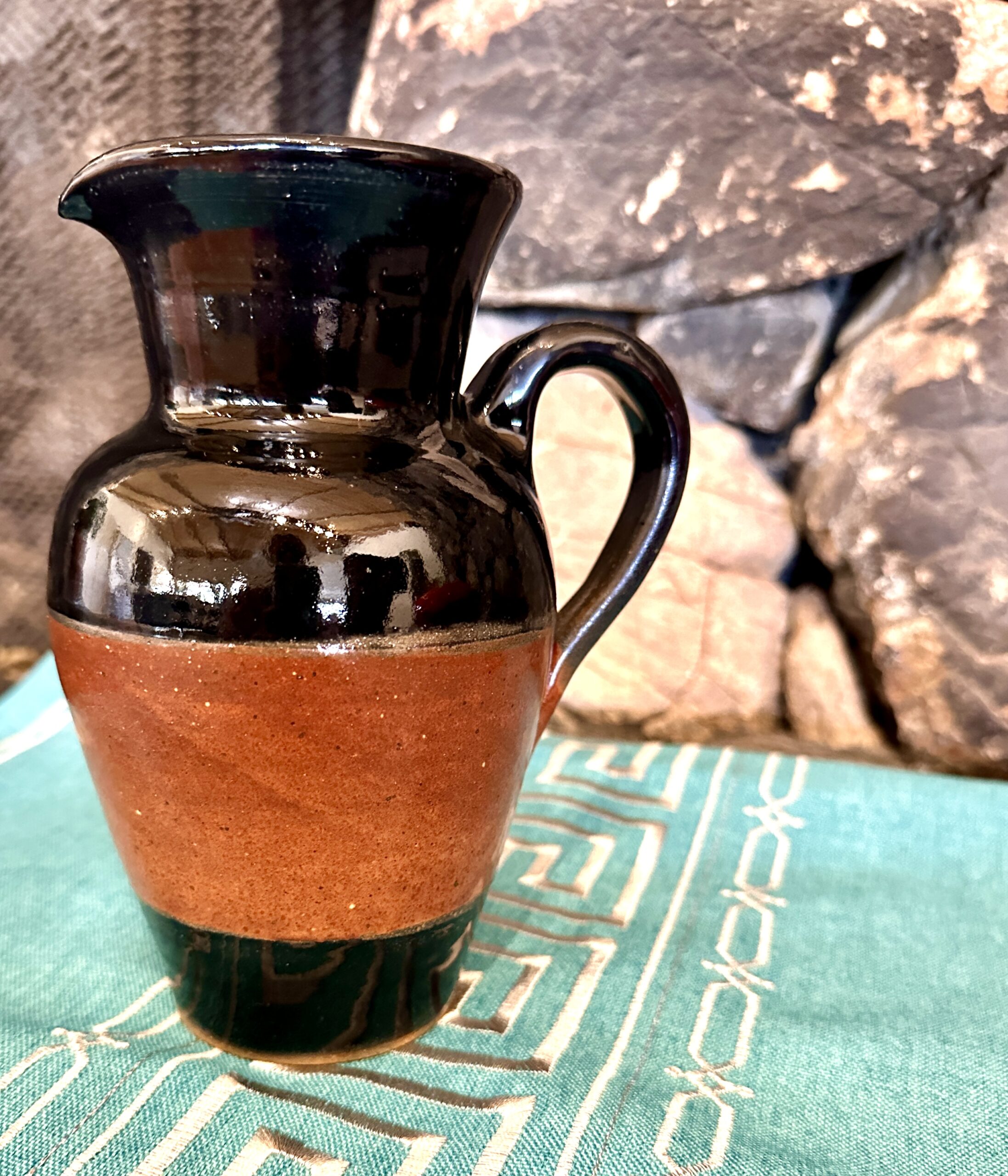What’s the difference between a Greek antiquity and an antique? An antiquity has been unearthed by archeology. An antique hasn’t. The former is usually much older, some pieces dating as far back as 4,000 years.
I embarked on a month long project to replicate an historic Greek pot at a clay studio. Within the first 30 minutes, I realized how impressive it is Europe’s first great civilization turned out countless sophisticated pieces using only rudimentary tools.
Even with a potter’s wheel and stellar teacher, I couldn’t recreate an urn fashioned after ones made during the age of Plato and Socrates.
No matter your artistic ability, I highly recommend once in your life attempt to demystify an antiquity. Learn what it took to bring clay vessels, stone sculptures, gold jewelry, or marble columns to fruition in the Minoan or Bronze age.
Here are tips for learning to replicate a Greek antiquity!
Recreate Greek Pottery
This is the pitcher I made. It was to look like an oinochoe – translated as “wine-pourer” — from the Mycenaean time (1,770BC – 1,100BC). Greek vessels each had a specific purpose. For example, the krater jug was used to dilute the wine with water. Here is a chart of typically made pottery.

Most were decorated with intricate paintings. Greek pots, or vases as they were called, from 900BC – 700BC displayed geometric patterns. Later, paintings of heroes in battle and athletes danced around the vessels perimeter.
I thought of enhancing my vase, but it was way beyond my skill level.
 How to Make Your Own Greek Antiquity
How to Make Your Own Greek Antiquity
My husband and I took a pottery class together. Lots of laughs ensued! Grab your main squeeze or best buddy and sign up at your local studio.
Pottery is only one antiquity you can learn to mimic in an art class. Here are a few more ideas:
- Jewelry. Aphrodite, the ancient Greek goddess, wore gold necklaces, brooches and flower earrings. Wreaths, arm bands and hair pieces with pearls and gems were popular in the culture, too.
Research what piece you’d like to replicate, find a local jewelry making class and construct a modern day version.
- Draw or paint Greek architecture. The Parthenon, dedicated to the goddess Athena, looms high above the city of Athens. It’s 46 white marble columns topped with boldly decorated Corinthian capitals lends itself to an artist rendition on paper. It’s only one of Hellene’s structural masterpieces you can reproduce.
- Sculpt a Greek figurine. Bronze was widely used by Greeks to create sculptures. Tin and copper were melted together to form the burnished alloy. Stone was another widely used medium. An art teacher can help you carve and cast the perfect form.
Because sculptures are one of the main types of remaining Greek art, museums are full of the beauties. A visit to one will provide inspiration for your project.
Should you want to tackle a pottery piece at home, there are numerous beginner pottery wheels and tool kits online. National Geographic has an inexpensive, high-quality version. Heres the link: https://amzn.to/3KNR5P6
Learning about a country’s past through art, allows you insight into their lifestyle both then and now.
Related Posts:
Culture Trip: Twelve Countries, Twelve Traditions.
Culture Trip: French Food Made Easy



Comments